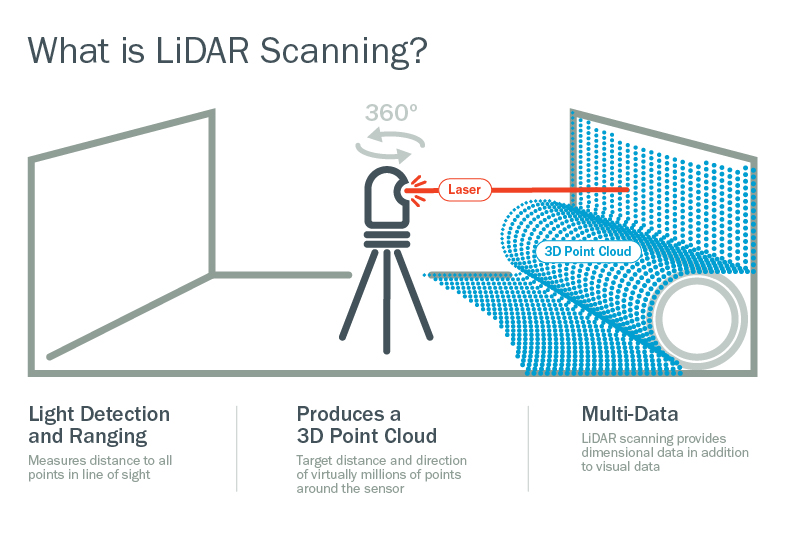Innovative applications of LiDAR (light detection and ranging) scanning allows creation of virtual 3D models of real-world infrastructure. These models can be of anything you have access to, from wastewater treatment plants to buried sewer systems.
For utilities, when leveraged correctly, these technologies can provide a wealth of information. The advantages, says BC expert Dr. Mike Metcalf, are twofold:
- LiDAR dramatically increases the amount of data that can be obtained in a single acquisition period, saving time and costs while creating exponential opportunities to put these data to work and optimize operations.
- It also provides realistic 3D representations, and understanding these visualizations can benefit asset management, design, and construction decisions and activities.
“The ability to accurately understand the condition of your infrastructure, both above and below grade, is incredibly important for efficient and cost-effective management of that infrastructure.”
Brown and Caldwell National Technology and Innovation Leader for Conveyance Infrastructure Dr. Mike Metcalf
How LiDAR works
For the uninitiated, this is how LiDAR works: A LiDAR sensor is placed inside a structure, such as an underground vault. Once positioned, the system sends light all around it in a 360-degree sphere to measure the distance to all points within the laser sensor’s line of sight. This creates a 3D virtual cloud made up of millions of these points. It is a unique mapping system in that it provides both high-definition visual and accurate dimensional data.

Ⓒ 2022 Brown and Caldwell. All rights reserved.
BC has leveraged this proven technology in the water and wastewater industries to internally map and assess the condition of buried structures and piping, gaining enhanced 3D details when compared to more traditional visual-based inspection methods. The digital power doesn’t stop there, however. Once the data are collected and processed, stitching those representations together creates a comprehensive and clear view of the utility’s asset like a 3D map.
For instance, when BC used LiDAR to inspect about 150 manholes and catch basins for a U.S. client, not only did it provide structural data such as type, dimensions, and connectivity, it was also able to identify non-standard construction that might appear to the naked eye as standard.
“It’s really eye-opening,” he said. “The amount of data acquired from a single scanning effort gives you an immediate assessment advantage because it allows you to expand the breadth of what you can do with these data.”
Brown and Caldwell National Technology and Innovation Leader for Conveyance Infrastructure Dr. Mike Metcalf
For a utility or plant owner/operator, that power can be used to update the utility’s geographical information system (GIS), track an asset’s condition over time to prioritize capital investments, or improve a hydraulic model’s data input, among other benefits.
Above and below
BC has applied LiDAR successfully on underground and aboveground scanning projects ranging from wastewater treatment plant conduits and standalone process buildings to drainage asset inspections. BC has further developed standard operating procedures (SOPs) for data acquisition and management, and a standardized set of deliverables.
“One of the really cool aspects of this technology is that when you’re doing the scan from inside the structure, these data will allow you to ‘see’ the outside of the structure, and the structure’s relationship to the surrounding area. You can stitch multiple scans together and you see how multiple structures are tied together from the inside out,” he adds. “Plus, you can often see all the surrounding structures, like houses, the slope of a street, and other infrastructure. That’s very powerful information.”
